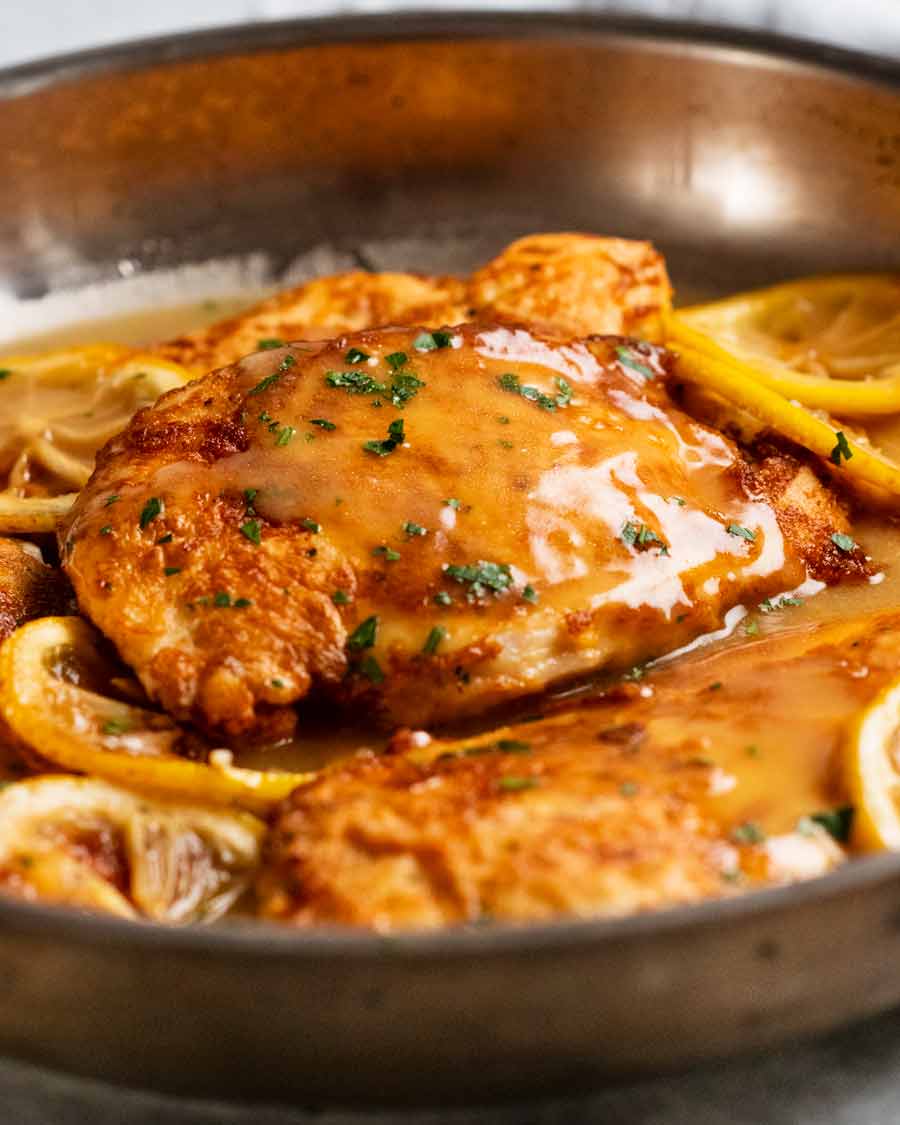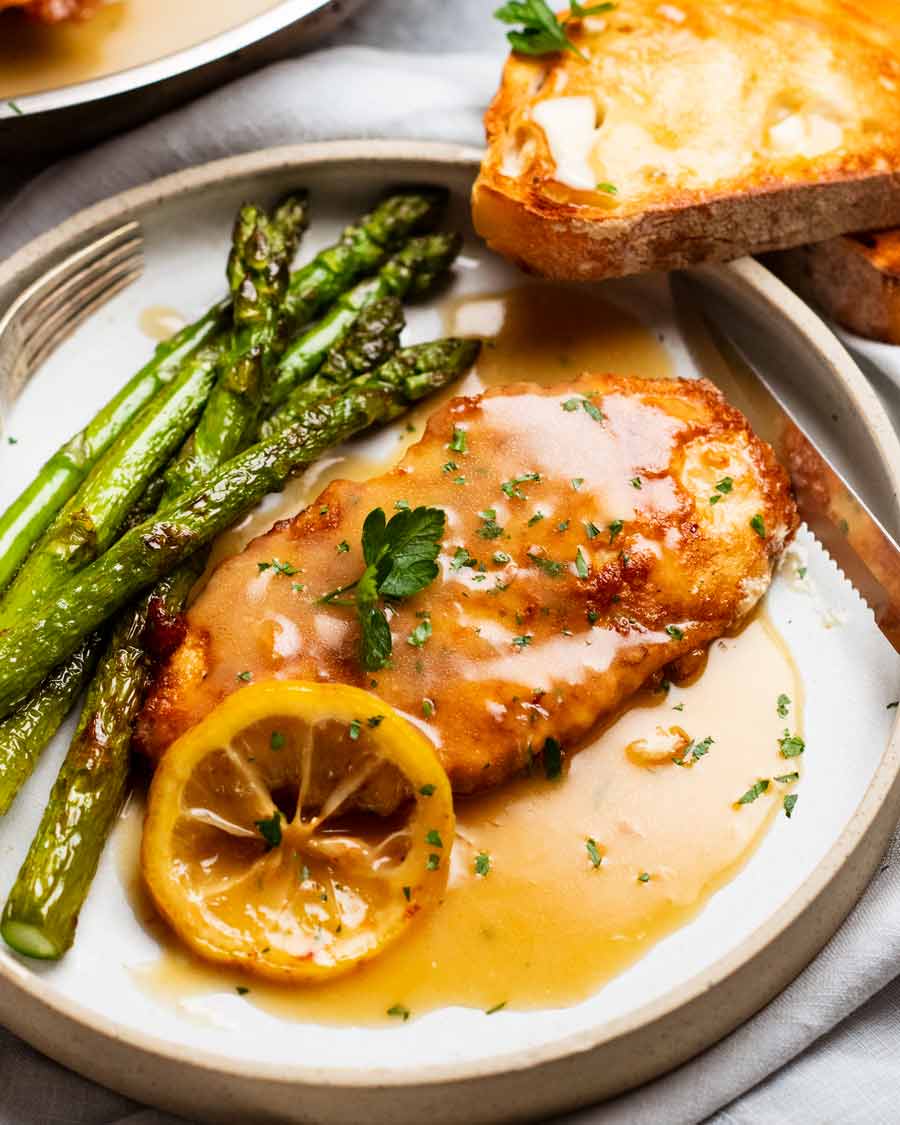Lightly battered pan-fried chicken breast with an elegant white wine lemon sauce. It’s like Chicken Piccata, but a thicker sauce, more of it, no capers, with subtle lemon flavour. It’s got a terrific crust that soaks up the sauce! Lovely restaurant dish that’s simple to make at home.
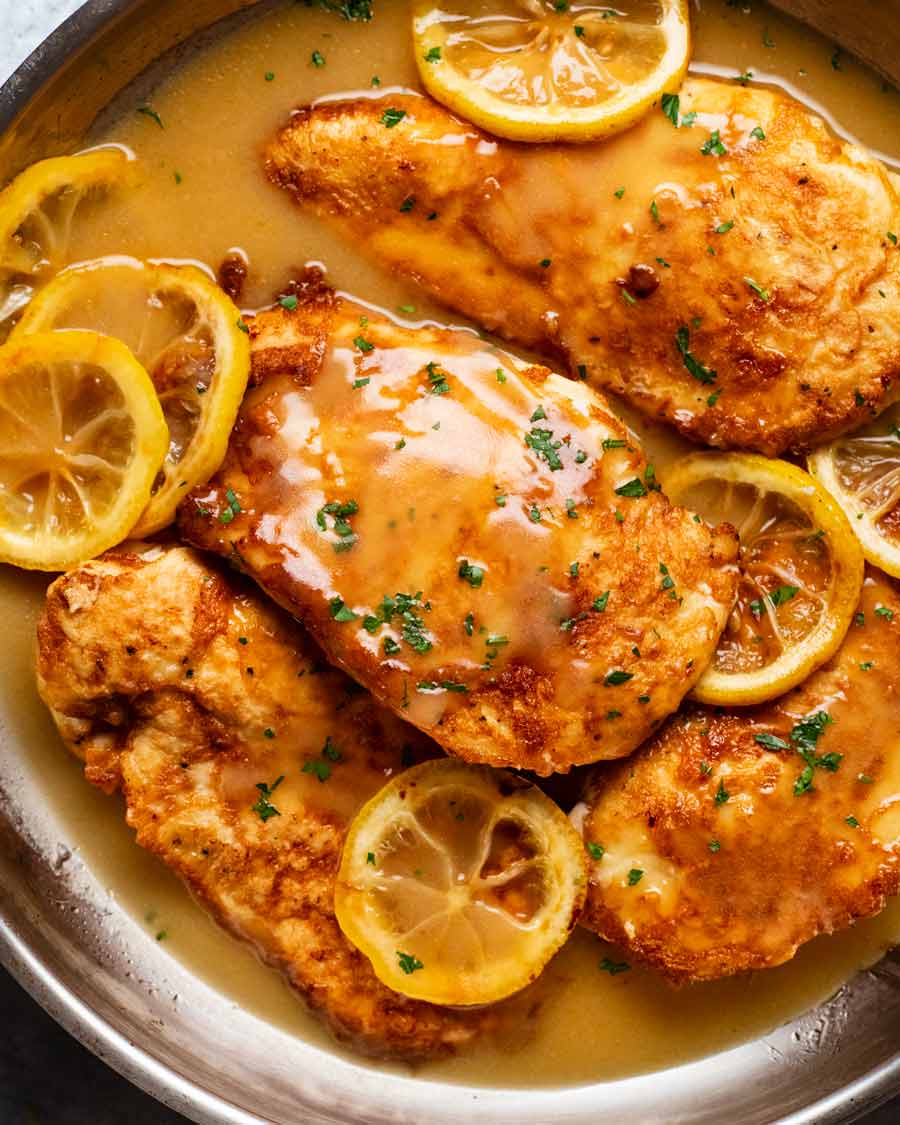
Chicken Francese
Chicken breast, being a lean, neutral flavoured protein, is a terrific blank canvas to get creative with. Stuff it, sear it, crumb it, bake it, fry it, marinate it, poach it – see the many, many ways I cook it in my chicken breast recipe collection!
Today, we are battering and saucing. The battering is a little unique. Chicken Francese is dredged in egg then pan fried which gives the chicken a lovely golden crust with excellent sauce clinging capabilities.
Speaking of the sauce! It’s an elegant white wine sauce that’s savoury with a subtle brightness from lemon. It doesn’t taste winey because it’s reduced to cook out the alcohol. And it’s not meant to be really lemony, it just has a subtle flavour from the juices of lemon slices put into the sauce. I personally think most recipes use way too much lemon which makes it lip-puckeringly sour.
Also, not all recipes thicken the sauce, it’s thinner. I am firmly in the thickened sauce camp. Like so:
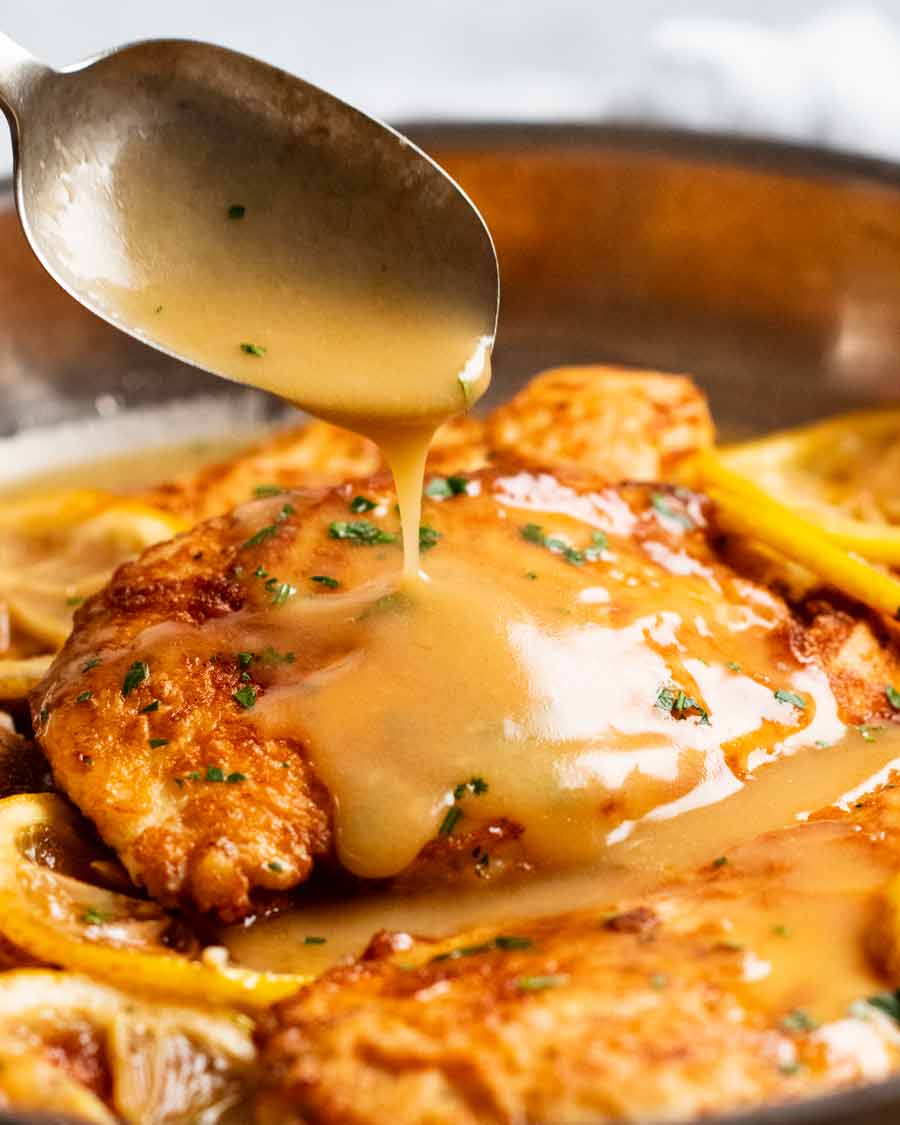
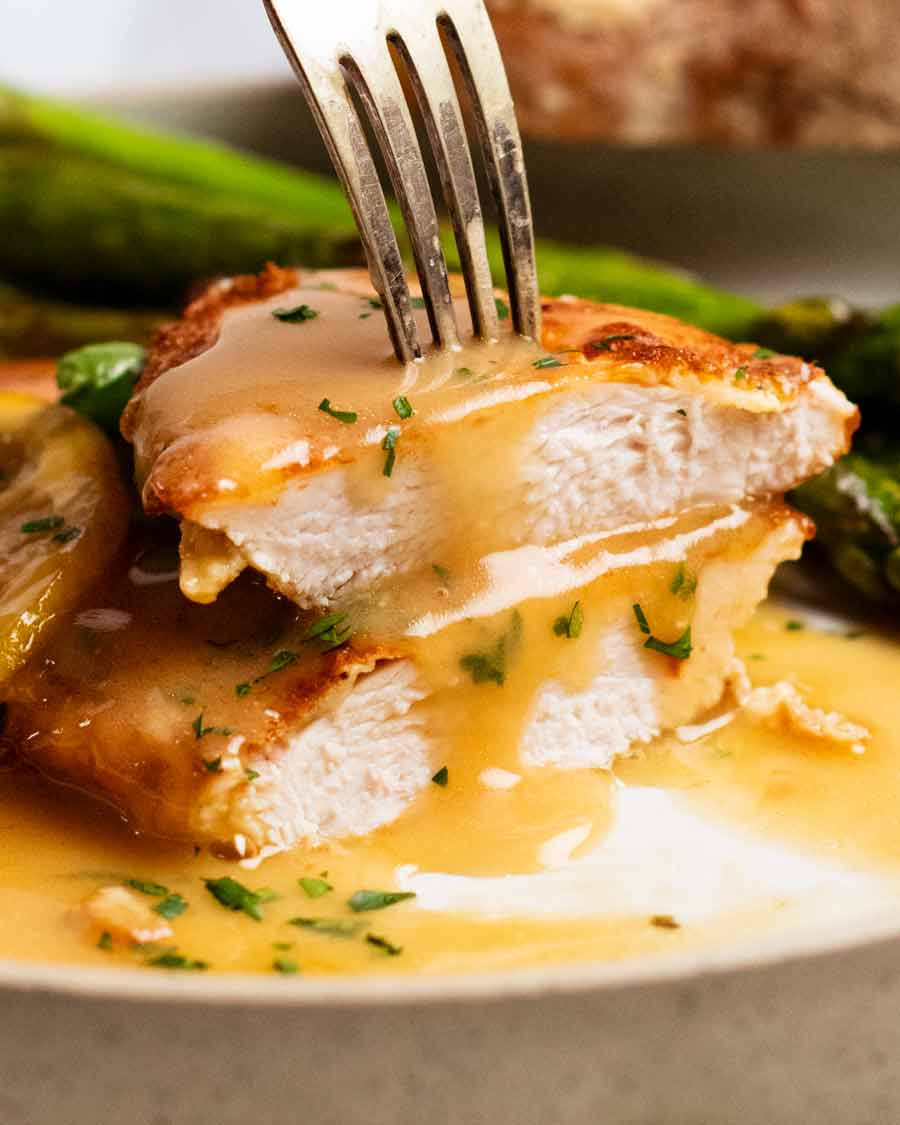
So, if all that sounds good to you, read on!
Ingredients in Chicken Francese
Here’s what you need to make Chicken Francese:
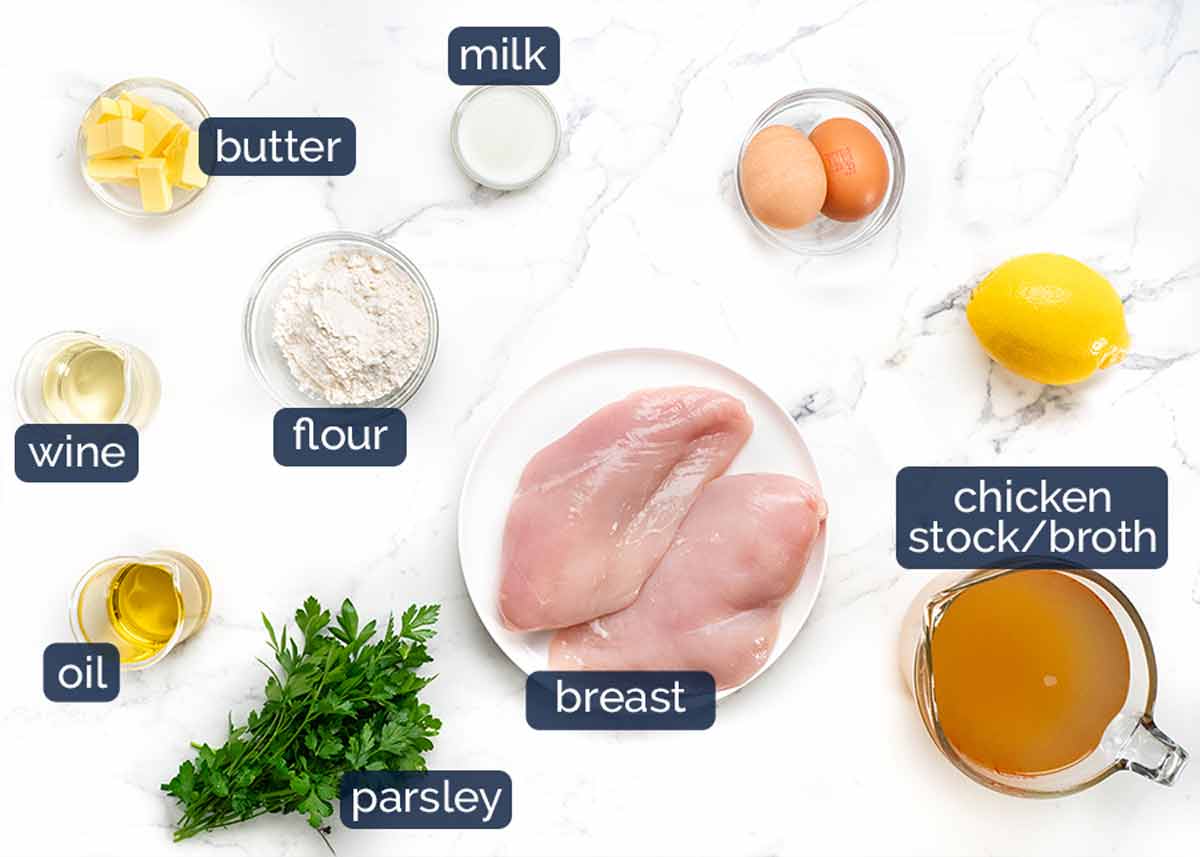
-
Chicken breast is the cut commonly used for Chicken Francese. We only need 2 because we cut them in half horizontally to form 4 thin steaks in total. Get big ones, so one piece makes a sufficient serving for a meal. You could also get chicken breast that’s already cut / pounded thin, usually sold labelled as “chicken schnitzel” here in Australia (it comes un-crumbed).
Boneless thighs will also work. Pound to even thickness to get a nice flat surface on both sides so the egg batter cooks evenly.
-
Eggs and milk whisked together make up the batter than the chicken is dipped in before frying.
-
Flour is used to thicken then sauce and for coating the chicken before dipping in the egg. It makes the egg cling better to the chicken and also makes the crust a little bit crispy.
-
Wine – Chardonnay is the best all-rounder cooking wine, in my opinion, for flavour. It is the only white wine I stock for cooking these days. No need to use an expensive one! Pretty well documented by cooking authorities that there’s no need to use expensive wine for cooking. Buy discounted bottles – I use ~$15 bottles discounted to ~$5.
Substitute with non-alcoholic white wine. Else, leave out the wine and add 2 – 3 tablespoons lemon juice to make a lovely lemon sauce instead.
-
Chicken stock/broth is the other liquid that makes up the sauce.
-
Butter for the sauce and olive oil for cooking the chicken. We discard the surplus olive oil (which gets black bits in it) before adding the butter.
-
Lemon – Cut into slices then pan fried before adding back into the sauce. A very specific Chicken Francese step! More on this in the How To Make section below.
-
Parsley for optional garnish.
How to make Chicken Francese
A nice, leisurely 15 minute cook. We first pan-fry the battered chicken cutlets then make the sauce in the same pan. The chicken is returned into the sauce at the end so the crust gets soaked in the sauce, as well as re-warming the chicken.
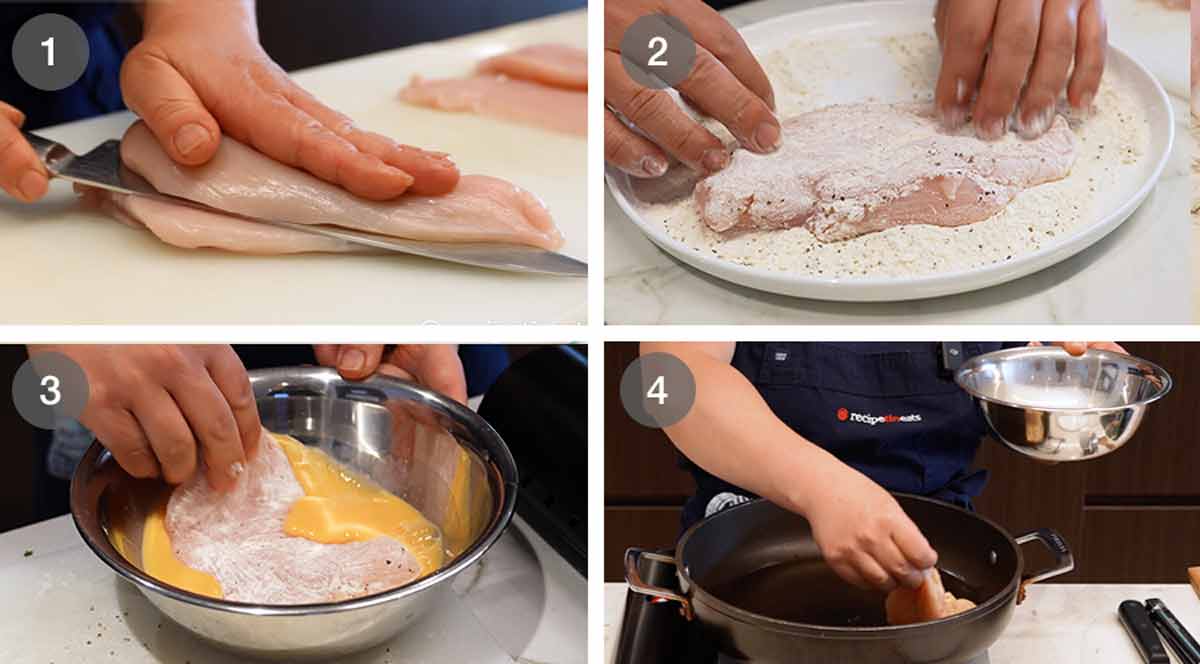
-
Cut each breast in half horizontally to form 4 thin steaks in total.
-
Flour coating – Mix flour, salt and pepper on a plate (I use my fingertips). Coat the chicken in the flour first, shaking off excess, then set aside on a plate while you heat the oil in the pan, ready to cook.
-
Egg dredge – Once the oil is hot, dip the chicken in the egg, coating both sides, then hold it up for a couple of seconds to let the excess drip off.
-
Cook chicken – Put the chicken straight into the pan. Then continue to coat the remaining chicken pieces.

-
Cook the chicken for 3 minutes until golden. Flip, lower heat to medium, then cook for 4 minutes until the chicken is golden (target internal temperature 68°C/155°F). Then remove onto a plate. The chicken will rest while we’re making the sauce. It’s ok if it cools down, it will warm up when we put it back in the sauce.
-
Pan fry lemon slices – Next, cook the lemon slices for about 1 1/2 minutes until lightly browned or they become soft (usually the latter for me). In this step, the lemon slices are soaking up the tasty bits left in the pan from cooking the chicken (it’s called fond). This flavour is then released into the sauce when we pop the lemon slices in at the end.
This is a step that is unique to Chicken Francese! Great technique. 🙂
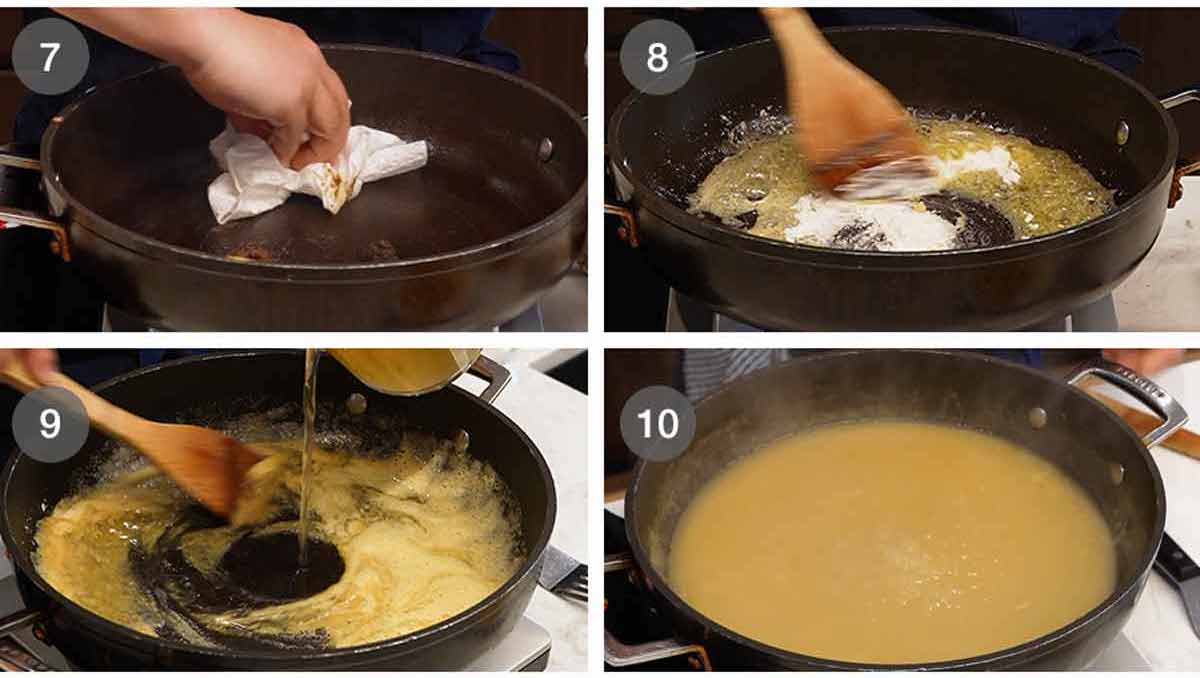
-
Clean the pan by giving it a quick wipe down with paper towels. You’ll see there are lots of black bits from cooking the chicken. No need to wash with detergent, just get rid of most of the black bits.
-
Roux – Next, we move onto the sauce. Melt the butter over medium heat then cook the flour for 1 minute to cook out the raw flour flavour. This pasty mixture in the pan is called a roux and this is what thickens the sauce.
-
Make the sauce – While stirring, slowly pour in half the stock. Keep stirring until the roux is mixed into the stock. Then you can pour the remaining stock in along with the wine, salt and pepper. Then mix to combine.
Lump free! The technique of stirring while you slowly pour in some stock should prevent lumps forming in your sauce. But if you end up with pesky lumps, swish a whisk across the surface of the liquid to remove them, taking care not to scratch the non-stick surface of the pan. Worst case – strain it. 🙂
-
Simmer to thicken – Simmer the sauce for around 4 minutes, stirring every now and then, until it thickens into a syrupy consistency.

-
Sauce thickness – This is what you’re aiming for. About the thickness of maple syrup. It will thicken more when the chicken is returned into the pan, from flour bits in the crust mixing into the sauce.
-
Finishing – Once the sauce is the right thickness, it’s time to bring it all together! With the pan still on the stove, pop the chicken pieces back in along with the lemon slices and let it simmer for about 30 seconds to warm through and bring the flavour together.
Then spoon sauce all over the chicken, then it’s dinnertime!
